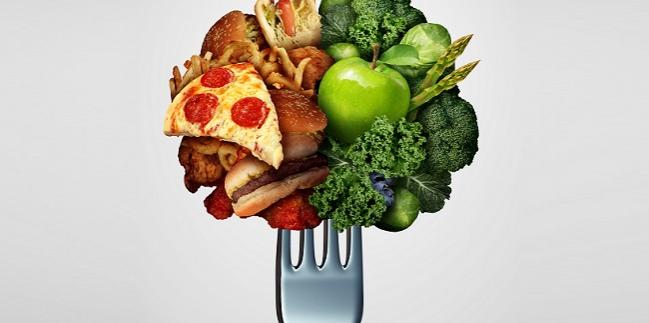Higher Inflammatory Food ‘Index’ Linked to CVD Risk
Knowing which foods produce a biomarker reaction and how that relates to risk helps flesh out inflammation’s role.

People who eat foods known to increase inflammation are at higher risk of developing cardiovascular disease, according to a study that used a food-based “inflammatory index” derived from circulating concentrations of inflammatory biomarkers.
The study, say authors, is the first to use this kind of index, rather than specific diets or dietary patterns, to show that the greater the consumption of these foods, the higher the cardiovascular risk.
Co-primary investigators Jun Li, MD, PhD, and Dong Hoon Lee, ScD (both Harvard TH Chan School of Public Health, Boston, MA), and colleagues reported their findings online yesterday in the Journal of the American College of Cardiology.
As described in the paper, the empirical dietary inflammatory pattern (EDIP) score has been studied previously and is based on changes in the levels of interleukin-6, TNF-alphaR2, and C-reactive protein elicited by 39 predefined food groups. Greater intake of red meat, processed meat, organ meat, refined carbohydrates, and sweetened drinks, for example, increases inflammatory potential, while green leafy vegetables, dark yellow vegetables, whole grains, fruits, tea, coffee, and wine are all known to decrease inflammatory potential.
Speaking with TCTMD, Li explained that what makes the tool unique is the specific inflammatory score given to different foods that, for example, treats green leafy vegetables as distinct from other types of vegetables.
Li et al’s analysis derived EDIP scores from food frequency questionnaires collected for the Nurses’ Health Study (NHS) 1 and 2, as well as the Health Professional’s Follow-up Study (HPFS). Cardiovascular endpoints over 5.2 million person-years of follow-up were then assessed according to quintiles of EDIP score.
Inflammatory Index and CVD
After adjusting for use of anti-inflammatory medications and cardiovascular risk factors, including body mass index, a higher EDIP score was linked to an increased risk of cardiovascular disease (incident nonfatal myocardial infarction, fatal coronary heart disease, and fatal and nonfatal stroke). People with the highest dietary inflammatory potential, by quintile, had an increased risk of CVD compared to the lowest quintile (HR 1.38; 95% CI: 1.31-1.46). The pattern was the same for coronary heart disease (HR 1.46; 95% CI 1.36-1.56) and stroke (HR 1.28; 95% CI 1.17-1.39). Results were consistent between men and women, and held up after a range of adjustments.
The study does not at this point prove a causal role for inflammation, the authors note. And speaking with TCTMD, Li stressed that their tool still needs validation in other patient cohorts, such as those with greater racial diversity than the NHP and HPFS cohorts, as well as prospective validation. “This cannot reach the stage of complete clinical translation before we have validation studies and mechanistic studies,” she cautioned.
That said, she continued, “I think that a lot of clinicians, especially clinicians who work in cardiovascular disease, would believe that inflammation is a very important biological reason to develop atherosclerosis, heart disease, and stroke. So this study provides evidence to support the idea that diet can influence inflammation, and then impose a risk of heart disease and stroke risk.”
The study also highlights the types of foods with the lowest inflammatory potential as distinct from nutrient value, said Li. “So I think for individuals that are at high risk of developing cardiovascular disease, clinicians, from this study, can get some evidence to suggest they eat more anti-inflammatory foods and reduce their intake of proinflammatory food.”
Chewing on Choices
Li’s paper is one of two in JACC this week exploring the role of inflammatory foods in CVD. A research letter by Montserrat Cofan, PhD (Hospital Clínic de Barcelona, Spain), and colleagues reports that supplementing diet over a 2-year period with walnuts—known to have anti-inflammatory properties—significantly reduced concentrations of inflammatory biomarkers.
Taken together, Ramon Estruch, MD, PhD (Instituto de Salud Carlos III, Madrid, Spain), and colleagues write in an accompanying editorial, the papers suggest a bigger role for anti-inflammatory foods in CVD prevention. This evolving research, they say, “should provide the basis for designing healthier dietary patterns and upgrading their protective effects against CVD. These protective effects could also be used for other highly prevalent chronic diseases in which chronic inflammation plays a relevant role, such as diabetes, cancer, depression, cognitive decline, and Alzheimer’s disease. When choosing the foods in our diet, we should beware of their pro- and anti-inflammatory potential!”
To TCTMD, Li said that her group is already moving ahead with validation studies in more ethnically diverse cohorts, as well as with mechanistic studies. Additionally, “we are right now working using metabolomics technology to examine whether this dietary pattern is also associated with changes in the blood metabolome, and how that change in blood metabolome may be associated with cardiovascular disease,” She noted.
Shelley Wood was the Editor-in-Chief of TCTMD and the Editorial Director at the Cardiovascular Research Foundation (CRF) from October 2015…
Read Full BioSources
Li J, Lee DH, Hu J, et al. Dietary inflammatory potential and risk of cardiovascular disease among men and women in the US. J Am Coll Cardiol. 2020;76:2181-2193.
Estruch R, Sacanella E, Lamuela-Raventós RM. Ideal dietary patterns and foods to prevent cardiovascular disease. Beware of their anti-inflammatory potential. J Am Coll Cardiol. 2020;76:2194-2196.
Disclosures
- Li and Lee, as well as the editorialists, report having no relevant disclosures.


Comments